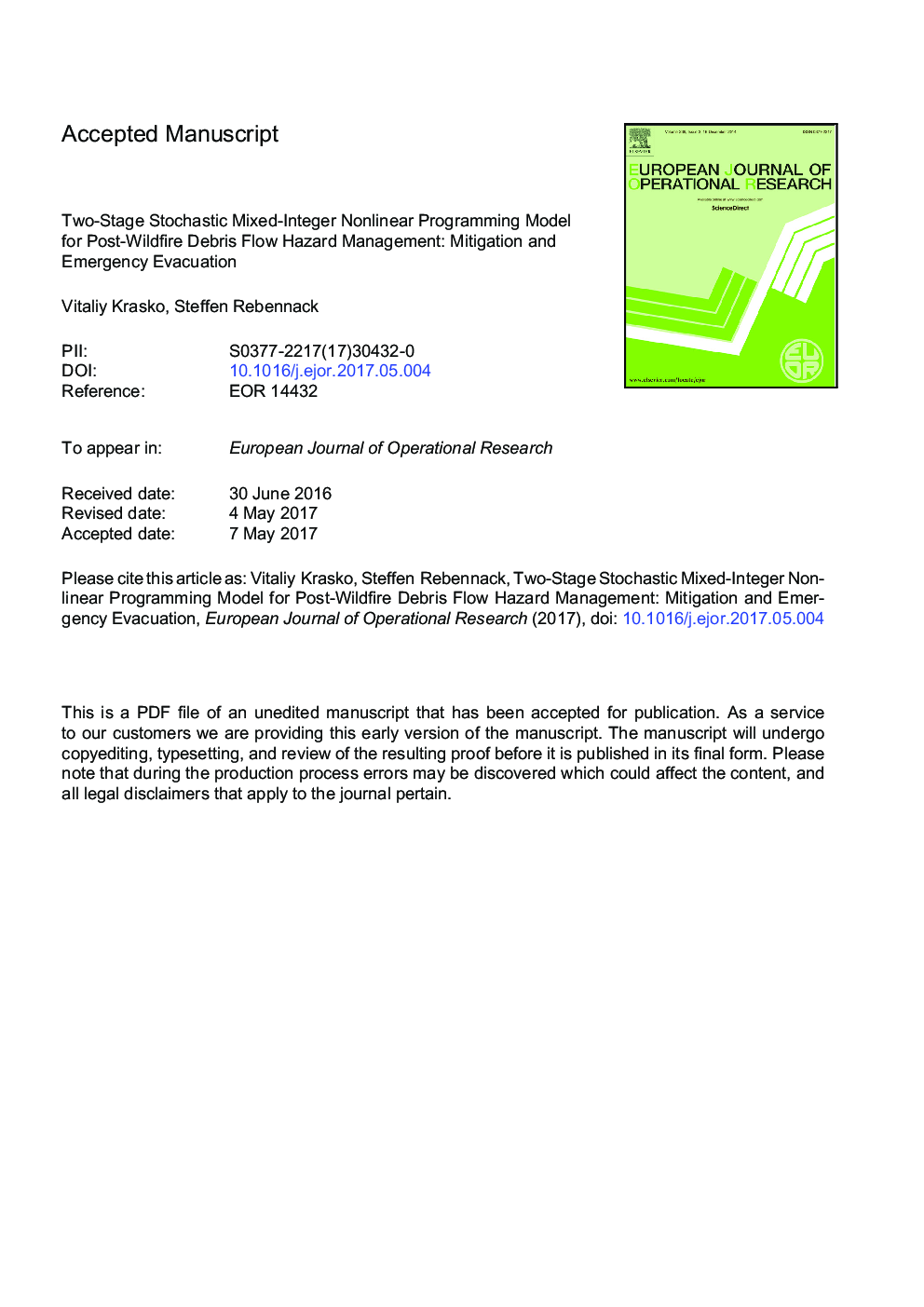| Article ID | Journal | Published Year | Pages | File Type |
|---|---|---|---|---|
| 4959619 | European Journal of Operational Research | 2017 | 29 Pages |
Abstract
Post-fire debris flows are natural disasters capable of destroying structures and endangering human lives. These events are prevalent in certain geographic regions and are expected to increase in frequency. Motivated by the literature on operations research in disaster relief operations, we present several novel formulations for hazard management of post-fire debris flows. The deterministic model allocates a budget towards various mitigation options including preventative efforts that reduce the probability of debris flow initiation and reduction efforts that reduce volume conditional on initiation. The objective minimizes expected damage to structures while weighting different storm scenarios according to Poisson process probabilities. A two-stage multi-period decision-dependent stochastic programming model is then developed to address the prevention of loss of life through emergency vehicle routing. This stochastic program considers different storm scenarios and allows mitigation actions taken in the first stage to affect second stage parameters and scenario probabilities. The program routes emergency vehicles to pick up injured people at damaged residences and then delivers them to a hospital. Case study results are presented using real data based on Santa Barbara after the 2009 Jesusita wildfire. Case study optimal mitigation measures focus on primarily on three out of the 17 basins. The deterministic results focus mostly on check dams given our parameter values, while the stochastic results incorporate pre-positioned emergency vehicles. Smaller budgets have a large marginal benefit from mitigation. We also generate a larger simulated data set based on this case study to test the computational tractability of our formulations.
Related Topics
Physical Sciences and Engineering
Computer Science
Computer Science (General)
Authors
Vitaliy Krasko, Steffen Rebennack,
